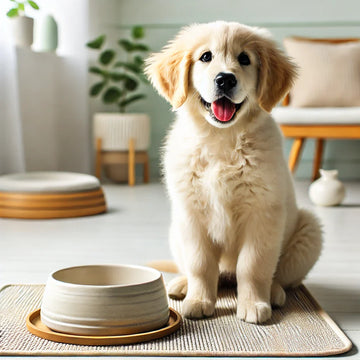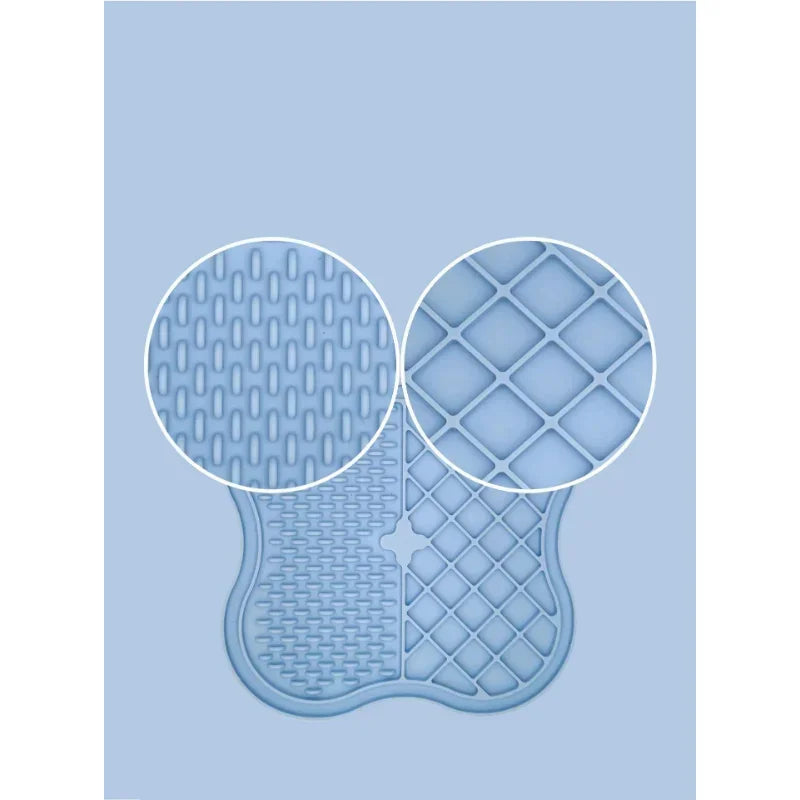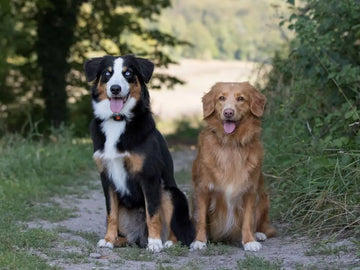As a responsible pet owner, it can be worrisome when your dog suddenly refuses to eat from their bowl. Dogs thrive on routine, and mealtime is often the highlight of their day. When this behavior changes, it may indicate an underlying problem, whether it’s related to health, environment, or behavior.
In this article, we’ll explore the various reasons why your dog might stop eating from their bowl, provide solutions to help address the issue, and conclude with a comprehensive FAQ to answer common concerns. By identifying the root cause, you can restore harmony to your dog's mealtime routine and ensure their health and happiness.
Could It Be a Health Problem?
The first thing to rule out when your dog refuses to eat from their bowl is a medical issue. Health problems can make eating difficult or painful, prompting your dog to avoid the bowl altogether.
Signs to Watch For
- Is your dog lethargic or less active than usual?
- Have they exhibited symptoms like vomiting, diarrhea, drooling, or noticeable weight loss?
- Do they struggle to chew or seem reluctant to open their mouth?
Dental problems are often overlooked but can significantly impact your dog’s eating habits. Sore gums, tooth decay, or broken teeth might make it painful for your dog to eat from a bowl, particularly if their food is hard or crunchy. Other issues, such as gastrointestinal discomfort, infections, or chronic illnesses, could also reduce their appetite.
Solutions
If you suspect a medical issue, the first and most important step is to schedule an appointment with your veterinarian. They can perform a thorough examination to assess your dog’s overall health and address any underlying problems. Dental issues, for instance, might require a professional cleaning or treatment for gum disease, while gastrointestinal problems could call for a change in diet or medication.
In the meantime, if you believe the problem is related to dental discomfort, you can soften your dog’s food by adding water, low-sodium broth, or wet dog food. Soft food is easier to chew and swallow, reducing any discomfort your dog might feel while eating. Many dog supplies stores offer specialized diets for dogs with dental sensitivities, which can be worth exploring.
Is the Bowl Itself the Problem?
Sometimes, the issue isn’t with your dog or their food—it’s with the bowl they’re eating from. While it may seem unlikely, dogs can become averse to their bowl for various reasons.
Common Bowl-Related Issues
- Cleanliness: A bowl that isn’t cleaned regularly can accumulate bacteria, old food residue, or odors that are unpleasant for your dog.
- Material Sensitivity: Some dogs are sensitive to plastic bowls, which can harbor smells or even trigger allergies. Metal or ceramic bowls, while more durable, can also make strange noises that might scare some dogs.
- Positioning: If the bowl is placed too high or low, or if it moves around while your dog eats, it may be uncomfortable for them.
Solutions
The first thing you should do is clean your dog’s bowl thoroughly every day. Use warm water and pet-safe dish soap to eliminate any lingering bacteria or food residue that might cause unpleasant odors. A clean bowl is essential for maintaining your dog’s interest in their food.
If your dog continues to refuse their bowl, consider switching to a different type of bowl. Stainless steel or ceramic bowls are widely regarded as the best dog feeders because they are durable, odor-resistant, and easy to clean. You might also want to try using a flat plate, as some dogs find it easier to eat from a shallow surface rather than a deep bowl.
Additionally, check the bowl’s positioning. If it slides around while your dog eats, place it on a non-slip mat or switch to a bowl with a rubber base. If your dog is a larger breed, consider an elevated feeder to make eating more comfortable. Many dog supplies stores offer adjustable feeders designed to cater to dogs of different sizes and preferences.
Could Food Preferences Be the Issue?
Dogs can be surprisingly picky eaters. If your dog is turning their nose up at food they used to enjoy, it’s worth considering whether the food itself is the issue rather than the bowl.
Things to Check
- Has the food recently changed? Dogs can notice subtle differences in texture, taste, or smell if the recipe or brand has been altered.
- Is the food fresh? Stale or expired food can lose its flavor and appeal. Your dog may also detect contamination that isn’t obvious to you.
- Could your dog be bored of their usual meals?
Solutions
If your dog’s refusal to eat coincides with a change in their food, try switching back to the brand or recipe they previously enjoyed. Dogs are creatures of habit and often prefer familiar tastes and textures. When transitioning to a new food, do so gradually over 7–10 days by mixing small amounts of the new food with their old food to minimize stomach upset.
Proper storage is also key to maintaining food freshness. Invest in airtight containers to keep dry food from becoming stale or absorbing odors. These containers are a staple in dog supplies and help ensure your dog’s food stays appealing and safe to eat.
To make your dog’s food more enticing, consider adding safe and natural food toppers. For instance, plain cooked chicken, unsalted chicken broth, or small amounts of wet dog food can enhance the flavor and aroma of your dog’s meal. For picky eaters, premium dog food brands or fresh meal delivery options might provide a higher-quality, more appealing solution.
Is Anxiety or Stress a Factor?
A dog’s emotional well-being plays a significant role in their eating habits. If your dog is anxious or stressed, they might avoid their bowl as part of a larger response to their environment.
Potential Stressors
- Has there been a recent change in your home, such as a new pet, new baby, or move?
- Is their feeding area noisy, crowded, or otherwise uncomfortable?
- Are they competing with other pets for food?
Dogs thrive in predictable environments. If their routine is disrupted or they feel unsafe, their refusal to eat could be a sign of distress.
Solutions
Relocating your dog’s feeding area can make a significant difference. Choose a quiet, low-traffic spot where your dog can eat without distractions. If you have multiple pets, feeding them separately can prevent competition and create a more relaxed environment for your dog.
Establishing a consistent feeding schedule is also important. Dogs thrive on routine, and knowing when and where they’ll eat can help reduce anxiety. In particularly stressful situations, calming aids like pheromone diffusers or anxiety wraps—available in many dog supplies stores—can create a more soothing atmosphere for your pet.
If your dog’s stress seems severe, you may want to consult a veterinarian or professional dog trainer for additional strategies to manage their anxiety.
Is It a Learned Behavior?
Some dogs develop habits or behaviors that make eating from a bowl less appealing. For instance, if you’ve been hand-feeding your dog or offering food directly from the floor, they may come to expect this treatment and refuse to eat otherwise.
Signs of Behavioral Issues
- Does your dog eat willingly when hand-fed but refuse when the food is in the bowl?
- Do they seem to refuse food as a way to gain attention?
Solutions
- Gradually transition back to bowl feeding. Start by hand-feeding your dog near their bowl, then slowly move the food into the bowl over time.
- Avoid rewarding undesirable behavior. If your dog refuses the bowl, do not give them treats or alternative food as a replacement.
- Use positive reinforcement to encourage your dog. Praise them and offer a small reward whenever they eat from their bowl.
Additional Tips
- For fast eaters, pet dog slow feeder food mat are excellent tools to make meals more engaging and prevent choking. For puppies, the best puppy feeders include slow feeder designs to prevent fast eating or choking during mealtime. These specialized dog feeders are widely available and come in various designs to suit your dog’s needs.
- Monitor your dog’s feeding environment. If you have multiple pets, feeding them separately can prevent competition and stress.
- Be patient. Changes in behavior can take time to correct, but with consistency and effort, most dogs will return to their normal eating habits.
Conclusion
A dog’s refusal to eat from their bowl can stem from a variety of causes, from medical issues to stress or behavioral habits. By identifying the root cause and implementing the solutions outlined here, you can help your dog overcome this challenge and enjoy their meals again. Whether it’s investing in new dog feeders, experimenting with food options, or addressing stressors, remember that your dog relies on you to ensure their health and happiness. With patience and care, you’ll get your dog back to eating out of their bowl in no time
Frequently Asked Questions (FAQ)
1. What should I do if my dog still won’t eat from their bowl?
If your dog continues to refuse their bowl after trying various solutions, consult a veterinarian or professional dog behaviorist. Persistent issues may indicate a deeper problem.
2. Can I train my dog to eat from the bowl again?
Yes! Gradual reintroduction and positive reinforcement are key. Be consistent and avoid reinforcing bad habits.
3. Is it okay to feed my dog without a bowl?
Yes, but it’s not ideal as a long-term solution. Scatter feeding or using puzzle feeders can provide enrichment but should be balanced with regular meals.
4. How soon should I consult a vet?
If your dog hasn’t eaten for more than 24 hours or is showing signs of illness, contact a vet immediately.
5. Could the location of the bowl affect my dog’s behavior?
Absolutely. A noisy or high-traffic feeding area can create stress. Try moving the bowl to a quiet, private spot.











